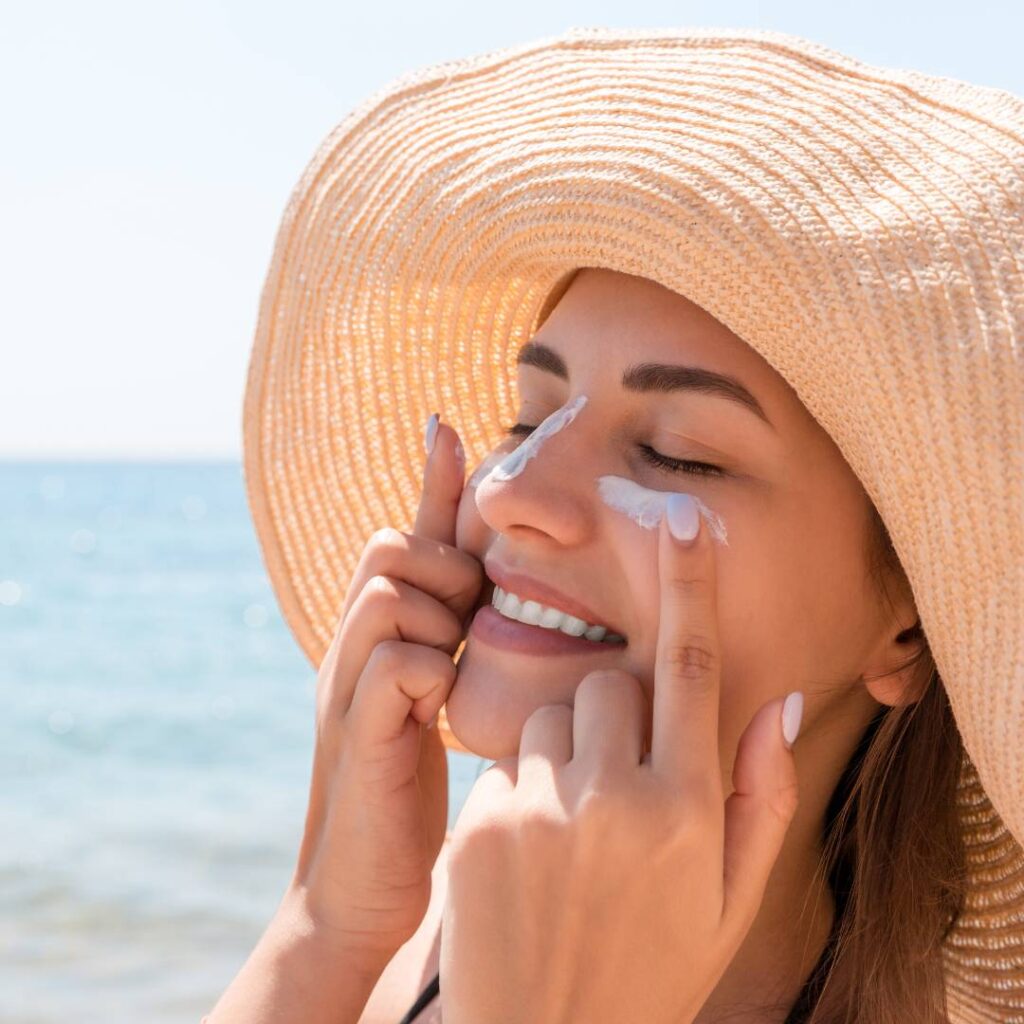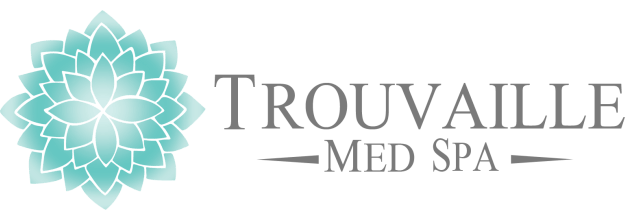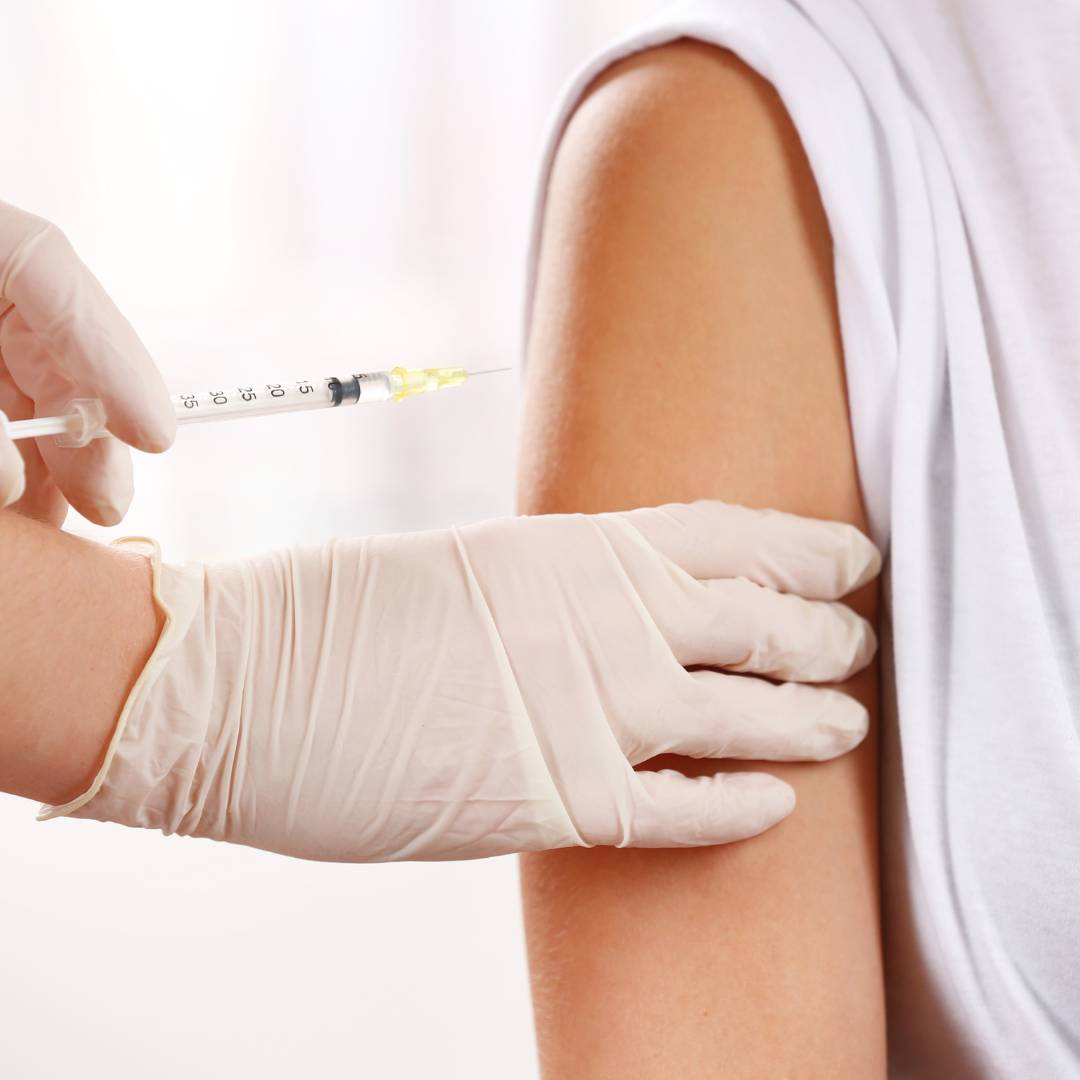Embracing the journey of aging gracefully involves more than just accepting the inevitability of fine lines and wrinkles. It requires a profound understanding of the causes behind these natural processes and a commitment to proactive prevention. While the passage of time is inevitable, the way we approach and navigate the aging process can significantly impact our overall well-being. By acknowledging the inevitability of fine lines and wrinkles, we empower ourselves to take informed and intentional steps towards maintaining our skin’s health. This journey is not about resisting aging but rather about embracing it with wisdom, self-care, and a proactive mindset. Understanding the causes of aging allows us to make informed choices in skincare, lifestyle, and habits that can contribute to a more graceful and fulfilling journey through the various stages of life.
Main Contributors to Wrinkles
Understanding the causes of fine lines and wrinkles is essential for proactive prevention and embracing the journey of aging gracefully. Various factors contribute to the development of these visible signs of aging, ranging from environmental exposures to lifestyle choices. Exploring the origins unveils the knowledge needed to make informed decisions about skincare and overall well-being.
Sun Exposure
Prolonged sun exposure poses a significant threat to the health and appearance of our skin, as the ultraviolet (UV) rays from the sun contribute to the breakdown of collagen, a crucial protein responsible for skin elasticity and firmness. Engaging in activities like sunbathing or neglecting proper sun protection measures can exacerbate this process, accelerating the development of fine lines and wrinkles. UV rays penetrate the skin, causing damage at the cellular level and leading to a loss of collagen, which in turn results in sagging and the formation of lines on the skin’s surface. It underscores the importance of adopting diligent sun protection practices, such as using sunscreen and seeking shade, to mitigate the harmful effects of sun exposure and preserve the skin’s youthful vitality.
Repetitive Movements
Repetitive movements, particularly those associated with facial expressions and muscle contractions, play a significant role in the development of fine lines and wrinkles. Everyday actions such as squinting in bright sunlight, laughing heartily, or furrowing the brow in concentration contribute to the gradual breakdown of collagen and elastin in the skin. Over time, these repetitive motions lead to the formation of lines and creases in areas where facial muscles are frequently engaged. While these expressions are natural and expressive, their cumulative impact becomes apparent as the skin loses its resilience. Recognizing the connection between repetitive movements and the development of wrinkles underscores the importance of incorporating skincare routines and preventive measures to address and minimize the visible effects of these habits, allowing individuals to maintain a more youthful and radiant complexion over time.
Smoking
Smoking has profound and detrimental effects on the skin, contributing to the development of premature aging signs. The act of smoking results in decreased blood flow to the skin, depriving it of essential nutrients and oxygen. Simultaneously, the harmful chemicals in tobacco inflict damage on collagen, a vital protein responsible for skin structure and elasticity. This combination leads to the manifestation of distinct signs, including tobacco-related wrinkles and lip lines. Smokers often exhibit pronounced lines around the mouth, commonly known as smoker’s lines, and an accelerated aging process due to the confluence of reduced blood circulation and collagen degradation. Acknowledging the link between smoking and skin damage underscores the importance of quitting this habit not only for overall health but also to preserve skin vitality and maintain a more youthful appearance.
Repetitive Movements
Repetitive movements, particularly those associated with facial expressions and muscle contractions, play a significant role in the development of fine lines and wrinkles. Everyday actions such as squinting in bright sunlight, laughing heartily, or furrowing the brow in concentration contribute to the gradual breakdown of collagen and elastin in the skin. Over time, these repetitive motions lead to the formation of lines and creases in areas where facial muscles are frequently engaged. While these expressions are natural and expressive, their cumulative impact becomes apparent as the skin loses its resilience. Recognizing the connection between repetitive movements and the development of wrinkles underscores the importance of incorporating skincare routines and preventive measures to address and minimize the visible effects of these habits, allowing individuals to maintain a more youthful and radiant complexion over time.
Smoking
Smoking has profound and detrimental effects on the skin, contributing to the development of premature aging signs. The act of smoking results in decreased blood flow to the skin, depriving it of essential nutrients and oxygen. Simultaneously, the harmful chemicals in tobacco inflict damage on collagen, a vital protein responsible for skin structure and elasticity. This combination leads to the manifestation of distinct signs, including tobacco-related wrinkles and lip lines. Smokers often exhibit pronounced lines around the mouth, commonly known as smoker’s lines, and an accelerated aging process due to the confluence of reduced blood circulation and collagen degradation. Acknowledging the link between smoking and skin damage underscores the importance of quitting this habit not only for overall health but also to preserve skin vitality and maintain a more youthful appearance.

Sleeping Positions
The way we sleep can significantly impact the formation of wrinkles, highlighting the importance of considering our sleeping positions in the quest for healthy and youthful skin. Sleeping positions, such as favoring the side or stomach, can lead to the development of sleep wrinkles due to prolonged pressure on the skin. When we rest our face on a pillow night after night, the repetitive compression of the skin against the pillowcase can contribute to the formation of fine lines. These sleep-induced wrinkles may become more prominent over time, particularly on the side where the pressure is consistently applied.
Hormonal Changes
Hormonal changes, particularly the decline in estrogen levels, play a significant role in influencing the elasticity and appearance of the skin. As individuals undergo natural processes such as menopause, the reduction in estrogen contributes to a decrease in collagen production, impacting the skin’s ability to maintain its firmness and suppleness.
This hormonal shift can result in the development of menopause-related wrinkles, characterized by a loss of skin elasticity and increased fine lines. Understanding the connection between hormonal changes and skin health highlights the need for tailored skincare routines that address these specific concerns. Incorporating moisturizers, anti-aging products, and lifestyle adjustments can help mitigate the effects of hormonal fluctuations, allowing individuals to navigate these natural changes with grace and maintain a more resilient and youthful complexion.
Pollution
Exposure to pollution in urban environments poses a considerable threat to the health and appearance of our skin. Pollution introduces free radicals to the skin, causing oxidative stress that can accelerate the aging process. These free radicals, originating from pollutants like smog and airborne particles, create a cascade of reactions that damage skin cells and contribute to the breakdown of collagen and elastin. Over time, this can manifest as visible signs of aging, such as fine lines and wrinkles. Urban dwellers, in particular, face constant exposure to environmental pollutants, emphasizing the need for protective skincare measures.
Diet and exercise
The connection between diet, exercise, and skin health is a vital aspect of maintaining overall well-being. A poor diet and sedentary lifestyle can contribute to nutrient deficiencies that significantly impact the appearance and resilience of the skin. When the body lacks essential vitamins, minerals, and antioxidants, it may struggle to repair and regenerate skin cells, leading to a dull complexion and increased vulnerability to signs of aging. Additionally, a sedentary lifestyle can compromise blood circulation, hindering the efficient delivery of nutrients to the skin. Recognizing the importance of a balanced diet rich in vitamins and minerals, coupled with regular exercise, is key to promoting optimal skin health. By nourishing the body from within and promoting good circulation through physical activity, individuals can contribute to a radiant and youthful complexion, addressing skin concerns at a fundamental level.
Skincare Routines
The efficacy of skincare routines in maintaining healthy and youthful skin cannot be overstated. Inadequate hydration and the neglect of essential anti-aging ingredients can significantly impact the skin’s appearance and resilience. Failing to moisturize leaves the skin susceptible to dryness, flakiness, and the premature development of fine lines. Additionally, overlooking key ingredients like retinoids, known for their ability to stimulate collagen production and promote skin renewal, hinders the skin’s natural rejuvenation process. A well-rounded skincare routine should prioritize hydration to retain moisture and incorporate anti-aging elements to address the underlying causes of fine lines and wrinkles. By adopting a diligent and informed approach to skincare, individuals can enhance their skin’s vitality, fostering a luminous and age-defying complexion over time.
By delving into these factors, individuals can proactively address and mitigate the impact of these causes on their skin, promoting a healthier and more radiant appearance as they embrace the natural process of aging.
Preventative Measures
Embracing preventative measures is paramount in cultivating skin health and promoting a graceful aging journey. These proactive steps encompass various aspects of daily life, from protecting the skin against environmental stressors to adopting beneficial habits that contribute to overall well-being. By incorporating these measures into our routines, we empower ourselves to address potential causes of fine lines and wrinkles before they become pronounced, fostering a radiant and resilient complexion.
Sun Protection
Prioritizing sun protection through the regular use of sunscreen and protective clothing is a fundamental step in preserving the health and appearance of our skin. Exposure to harmful ultraviolet (UV) rays from the sun can accelerate the aging process, leading to fine lines, wrinkles, and other skin concerns. Incorporating sunscreen with broad-spectrum protection into our daily skincare routine shields the skin from UV damage, preventing collagen breakdown and the development of sun-induced aging signs. Additionally, complementing sunscreen with protective clothing, such as wide-brimmed hats and long sleeves, offers an extra layer of defense against the sun’s harmful effects. By embracing these sun protection measures consistently, individuals empower themselves to proactively safeguard their skin and foster a radiant complexion for years to come.

Facial Exercises
Engaging in facial exercises is a proactive approach to promoting improved tone and resilience in the skin. These exercises target the muscles underlying the facial skin, helping to strengthen and tone them over time. By incorporating facial exercises into a regular routine, individuals may experience enhanced muscle support, which can contribute to a more lifted and firm appearance. Such exercises may involve smiling, puckering, or gentle massages that stimulate blood flow and encourage collagen production. While results may vary, the intention is to combat the natural loss of muscle tone that comes with aging.
Quit Smoking
Quitting smoking is a transformative step with immediate and long-term benefits for skin health. The harmful chemicals in tobacco smoke contribute to decreased blood flow and collagen damage, accelerating the aging process and leading to the formation of wrinkles. Choosing to quit smoking allows the body to recover, enhancing blood circulation and promoting the delivery of vital nutrients to the skin. In the short term, individuals often notice improvements in skin complexion, reduced puffiness, and enhanced radiance. In the long run, quitting smoking plays a crucial role in preventing further damage, reducing the risk of premature aging, and supporting the skin’s natural ability to regenerate. This decision not only positively impacts skin health but also contributes to overall well-being, aligning with a commitment to a healthier and more vibrant lifestyle.
Sleeping Strategies
Implementing strategic changes in sleeping positions can have notable benefits for skin health. Adopting back sleeping positions, in particular, is recommended to minimize facial contact with the pillow, reducing the potential for sleep-induced wrinkles and creases. Back sleeping helps distribute the weight evenly across the face, preventing pressure points that may contribute to the development of fine lines. Additionally, using silk pillowcases can complement this approach by minimizing friction between the skin and the pillow, reducing the likelihood of waking up with creased or pulled skin.
Hormonal Balance
Maintaining hormonal balance is crucial for overall well-being, including the health of our skin. When it comes to understanding and managing hormonal changes, seeking guidance from healthcare professionals is paramount. Consulting with healthcare professionals allows individuals to gain insights into the intricacies of hormonal fluctuations and their potential impact on skin health. Whether navigating puberty, pregnancy, menopause, or other phases of life, healthcare professionals can provide personalized advice and treatment options tailored to specific hormonal needs. By fostering open communication and collaboration with healthcare experts, individuals can take proactive steps to address hormonal imbalances, promoting not only internal health but also contributing to a radiant and balanced complexion.
Balanced Diet and Exercise
Maintaining a balanced diet and incorporating regular exercise into our routines are foundational pillars for overall health, and their impact extends significantly to the well-being of our skin. Adequate hydration is essential, as it keeps the skin moisturized and helps in the removal of toxins. Antioxidants obtained through a balanced diet rich in fruits, vegetables, and whole grains play a crucial role in protecting the skin from free radical damage, contributing to a more youthful complexion. Pairing these nutritional habits with regular physical activity not only enhances circulation, delivering essential nutrients to the skin, but also promotes collagen production, fostering skin elasticity and tone.
Optimal Skincare Routine
Adopting an optimal skincare routine involves a consistent commitment to using anti-aging products and seeking professional advice to address individual skin needs. The key lies in selecting products with active ingredients such as retinoids, hyaluronic acid, and antioxidants that target specific signs of aging. Regular application of these products can stimulate collagen production, improve skin texture, and reduce the appearance of fine lines and wrinkles. Additionally, consulting with skincare professionals allows for a personalized approach, considering factors like skin type, concerns, and lifestyle.
By incorporating these preventative measures into our daily lives, we can create a holistic approach to skin care that not only addresses the visible signs of aging but also promotes long-term skin health and vitality.
Wrinkle Correctors
Embarking on the journey to address fine lines and wrinkles involves exploring a myriad of treatment options designed to rejuvenate and enhance the skin’s appearance. These interventions, ranging from non-invasive procedures to injectable solutions, offer individuals a spectrum of choices to combat the signs of aging. Understanding these treatment modalities allows for informed decisions based on personal preferences and specific skin concerns. Whether opting for neurotoxins to relax facial muscles, fillers for volume restoration, chemical peels to promote skin regeneration, or microneedling to stimulate collagen production, individuals can navigate a diverse landscape of treatments to achieve a more youthful and revitalized complexion.
Neurotoxins
Neurotoxins, such as botulinum toxin injections, are a popular and effective method for addressing fine lines and wrinkles. These injections work by temporarily relaxing the underlying facial muscles, diminishing the appearance of dynamic wrinkles caused by repetitive movements. Commonly known as Botox, this treatment offers a minimally invasive way to achieve a smoother and more youthful complexion with subtle and natural-looking results.
Fillers
Fillers, consisting of injectable substances, serve as a versatile solution for addressing volume loss and fine lines. By strategically injecting hyaluronic acid or other substances into targeted areas, fillers help restore facial volume, plump up hollowed regions, and smooth out wrinkles. This non-surgical approach is highly effective in providing a youthful and rejuvenated appearance, offering immediate results with minimal downtime. Whether used to enhance cheek contours, soften nasolabial folds, or volumize lips, fillers offer a customizable and precise method for individuals seeking a refreshed and natural look without the need for invasive procedures.
Chemical Peels
Chemical peels are a rejuvenating skincare treatment that involves the application of a chemical solution to the skin, facilitating the removal of damaged outer layers. This process promotes cellular turnover and regeneration, unveiling a fresh, new layer of skin with improved texture and tone. The depth of the peel can be adjusted based on individual skin concerns, ranging from mild exfoliation to more profound removal of damaged skin. Chemical peels are effective in addressing various skin issues, including fine lines, wrinkles, sun damage, and uneven pigmentation.
Microneedling
Microneedling is a transformative skincare technique that involves stimulating collagen production through the strategic use of tiny needle punctures. During the procedure, a specialized device with fine needles creates controlled micro-injuries in the skin. This process prompts the skin’s natural healing response, triggering the production of collagen and elastin. As collagen levels increase, the skin becomes firmer, more elastic, and exhibits a smoother texture. Microneedling is a versatile treatment known for its effectiveness in reducing fine lines, wrinkles, and scars while enhancing overall skin tone and texture. This minimally invasive approach offers a rejuvenating solution, promoting a more youthful and radiant complexion through the power of collagen induction.
Understanding the causes, prevention, and available treatment options for fine lines and wrinkles provides a comprehensive approach to skincare. Factors like sun exposure, repetitive movements, hormonal changes, and lifestyle choices contribute to the aging process, emphasizing the importance of proactive prevention. Embracing the journey of aging gracefully involves not only addressing visible signs but also cultivating knowledge and confidence in one’s skin health. As a call to action, individuals are encouraged to prioritize their skin health, consult skincare professionals for personalized guidance, and embark on their journey to age gracefully. By taking proactive steps, adopting healthy habits, and seeking professional advice, individuals can navigate the aging process with resilience, embracing each stage with confidence and grace.




